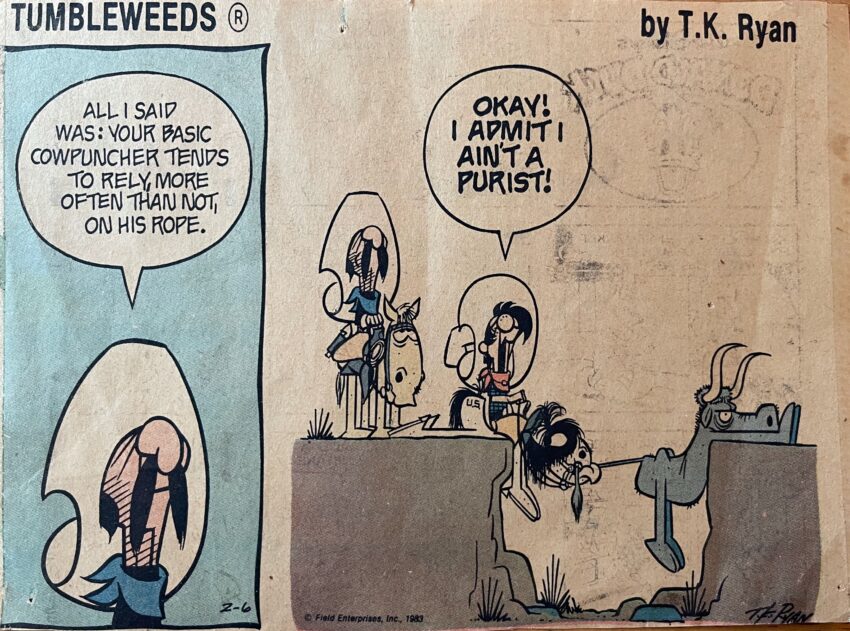“Grandmommy,” one of my baby grands would say when telling me a story while playing with my dollhouse. “Grandmommy, the girl goes in the front door. And then she goes to the kitchen and makes breakfast. And then she goes to the office upstairs to work.” And the story can continue to each room in the dollhouse, even the roof.
The ‘and then’ [which was clearly emphasized] always got to me. The ‘and then’ wasn’t passive. She made choices which advanced the story. The character moved to other rooms and did stuff. The ‘girl’ did not hit many obstacles, internal or external, nor did we discuss ‘needs and wants’. Who does when you are seven? The grand was fully engaged in telling a story, and in her imagination the girl was the hero.
Still, start with the ‘and then’ add ‘but when’, add ‘and then’ and get action and reaction.
Sigh. Unfortunately, the best way to check the thens, whens and thens is to 0utline.
In Senior English at Alemany Hi, I remember Sister Constance asking how I had avoided, over thirteen years of Catholic schooling [I didn’t think one year of kindergarten with Mother Regina really counted] making outlines. But I do admit, it was quite a feat! A good vocabulary albeit with poor spelling, excellent sentence structure through diagraming and a fertile imagnination got me pretty far in high school and college and a graduate degree. In truth, I did not need more, well, except for the spelling, for business memos–and then there was, Eureka! spell check.
I had what I needed; ambition, clear thinking, and the desire for action.
When I first started seriously writing fiction the first issue to get over was bullet points. Good business writing is wary of adverbs, adjectives, descriptors of any sort, and uses lots of phrases to make point.
Fiction, good fiction, involves exactly that, descriptors of every sort, an arc to a story, obstacles, needs wants, plotting, developing characters, and building a world. To see the whole story unfold outlining is encouraged. Still plotting out the story is still avoided. Regardless of Sister Anastasia [whose picture is in the dictionary under the definition of formitable] I still don’t outline.
I can tell you how I want the story to begin, who the main characters are and what the setting is….okay, so that’s the beginning of a plot. I can tell you how the characters come out in the end, what happens to their world and many of the obstacles they overcome. But outline? No. Plot? No. Because I want to see how my character handles the obstacles, needs and wants. I like the idea we write this story together, the character and I. Yeah, it takes longer, more trial and error, but that is how I engage in my story!
At a not-so-recent critique an agent liked my story, character, the ‘hook’ but wanted more ‘agency’ in my character. Hmmm….I like words so I thought about agency, looked it up in the OED, downloaded a post about it, and thought some more.
Agency is about the character driving the action forward, I am told. Making choices which sometimes endanger, sometime make moot the gist of the story. But always pushes the character forward for change. Ha! Made me think of Picard and ‘Engage.’ Engage in the future, engage with the problem, engage with the solution. Have agency.
I am working on a character now who needs more agency [working being the operative word]. The above cartoon was framed and on my desk for decades. To me agency requires ‘out of the box’ thinking. And just like Tumbleweeds…I am not a purist!
